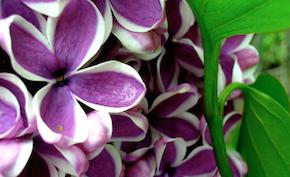“Ask the Plant and Pest Professor” is compiled from phone and email questions asked the Home and Garden Information Center (HGIC), part of University of Maryland Extension, an educational outreach of the University of Maryland.
Question #1: I was hoping you could help me understand the process of soil testing. My neighbor told me that the University of Maryland tested his soil a few years ago. I went on your website and found the publication on the subject but it looks like all of the labs are out of state. I really want to test the soil in my vegetable garden before I plant. Can you help?
Answer#1: The University of Maryland soil testing lab closed many years ago. As you mentioned we have lots of information on our website about soil testing. When you are on the home page look for the photo of a man’s hand holding a handful of soil. Watch the video as it helps to clarify the process. Under resources look at HG 110 and HG 110a (list of recommended labs). The lab’s website will explain how to take a sample and will provide a submittal form for you to print off. Your sample can be mailed to the lab in a self-closing plastic bag. Please contact us again if need help interpreting the results.
Question #2: Many years ago I planted an old fashioned lilac. It appears healthy but it has not bloomed well for the last couple of years. I asked at a garden center and was told they like alkaline soil and to use a fertilizer high in phosphorus. Can you provide any more information? I really miss the flowers.
Answer #2: There are many species and cultivars of lilac and we do not know which one you are referring to. The last few years we have had questions from homeowners very similar to yours. Ruling out other reasons why lilacs do not bloom which include, too much shade (planting sites can become shadier over time), too much nitrogen fertilizer (which promotes leaf growth and not flowers), improper pruning (pruning in summer, fall or winter removes flower buds), the most likely reason is that lilacs prefer cold winters. With the exception of this year our winters have been warmer than normal. So chances are good that your lilac will bloom well for you this spring. We do not recommend applying fertilizing but a layer of compost around the root zone would be helpful.
Question #3: We moved into a senior garden apartment complex this winter and are not allowed to put out bird feeders. Our apartment is on the first floor and I have an area out back where I can plant flowers or some shrubs. Would you have any suggestions of something I can plant to attract the birds?
Answer #3: A water source really attracts birds to a landscape. Are you allowed to put up a bird bath? It does not have to be large or fancy. A large saucer (you can even use one that is made to be placed under a container) placed on the ground would work. Keep it filled with fresh water. Change the water on a regular basis in the summer to prevent mosquitoes. Some perennials that attract birds are Coreopsis, Liatris spicata (gayflower), Echinacea (coneflower) and Rudbeckia (black-eyed Susan). It is best to plant a group of three or more. Birds love to feed on the berries of many shrubs. Some examples include, American cranberry viburnum, winterberry holly (you need a male and a female plant to produce berries), chokeberry, and blueberries which need well-drained, acidic soil.
To ask a home gardening or pest control question or for other help, go to extension.umd.edu/hgic Or phone HGIC at 1-800-342-2507, Monday through Friday, 8 a.m. to 1 p.m.



Write a Letter to the Editor on this Article
We encourage readers to offer their point of view on this article by submitting the following form. Editing is sometimes necessary and is done at the discretion of the editorial staff.